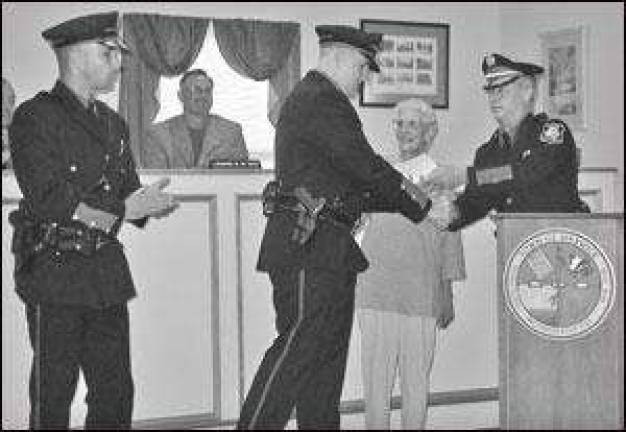Police defibrillators save two lives in just over a month

Warwick Within 35 days, the Warwick Police Department used its Automated External Defibrillators twice that resulted in two lives saved. The families involved call it nothing short of a miracle. Automated External Defibrillators (AEDs) have become more common in places from schools to health clubs to airplanes. Statistics show that those who are shocked with the defibrillator very soon after having a heart malfunction have a greater chance of surviving. For example, the difference between life and death when dealing with a heart issue and a defibrillator can be measured in seconds. An American Heart Association study in 2002 showed that survivors who returned to work and led normal lives after their incident, were shocked an average of 5.7 minutes after their attack. Those who died were not shocked until an average of 6.6 minutes after their collapse. Still, the success rate overall is very low for the defibrillators, making two successes in 35 days truly something to marvel at. The Warwick Advertiser reported last week about Police Officer Paul Todora’s quick response in helping to save the life of 75-year-old Theodore Filipowski on June 7. Todora used his AED to shock Filipowski three times before he was transported to St. Anthony Community Hospital and eventually Westchester County Medical Center. Filipowski left the hospital less than two weeks later and is healthy and active. Police Officers Mike Hoffman and Steve Helmrich had a similar situation on May 2 when they were called to the Bohn residence. Fred Bohn, who runs the radiology department at St. Anthony Community Hospital, had had a heart attack. The officers responded in four minutes, according to Chief Thomas McGovern, and used their AED as well. Bohn and his wife, Nancy, a registered nurse, were present two weeks ago to thank the police for their quick response that helped in saving Bohn’s life. “You were calm and confident in the midst of total chaos,” said Nancy Bohn, who had given her husband CPR while waiting for the police. “You were professional, respectful, always displaying compassion.” The defibrillators have been used often since becoming available to Warwick police in 2000, thanks to the generosity of Mary Bradner. Bradner, whose husband, Dr. Morris R. Bradner, died of a heart attack in their home 10 years ago, wanted to give others a fighting chance if they have a heart attack, so she created the Bradner Heart Fund. Through the fund, the police department has acquired four defibrillators, one in each police car and one at the police station. Sudden cardiac arrest kills more than 400,000 people each year in the United States alone. Most of these deaths are due to an electrical malfunction in the heart known as ventricular fibrillation. The American Heart Association estimates that 50,000 lives could be saved each year if AEDs were more widely available. “We in Warwick are blessed to have some fine men as part of our unified police force,” said Nancy Bohn. “May your good deeds be returned to you every day of your lives.”